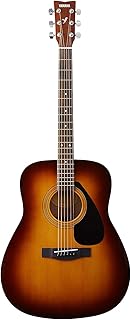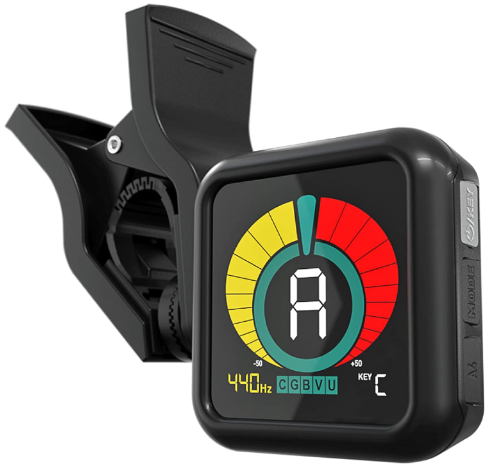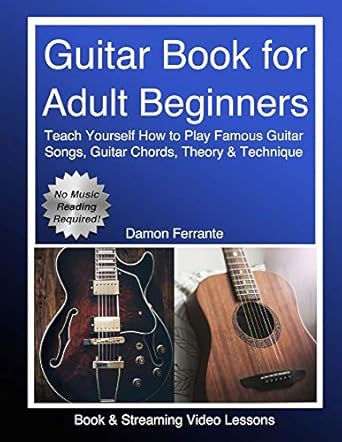Learning guitar from scratch can be a daunting experience for total beginners. However, with the right approach, you can quickly get comfortable and enjoy the process. This guide covers the basics for those who are just starting and offers easy-to-follow steps to get you playing your first song.

1. Choosing Your First Guitar
Before you begin learning, you’ll need to select the right guitar for you. As a beginner, it’s essential to choose a guitar that feels comfortable and suits your musical interests. The two main types of guitars are:
- Acoustic Guitar: Great for playing a variety of music styles, especially folk, pop, and country. It produces sound naturally and does not require an amplifier.
- Electric Guitar: Best for rock, blues, and heavier music genres. It requires an amplifier to produce sound, and it’s generally easier on the fingers due to lighter strings.

Choosing the Right Size
Make sure the guitar fits you. There are smaller guitars designed for children and beginners. Test out different sizes at a music store to find the one that suits your frame and feels comfortable.
2. Learn the Parts of the Guitar
Before you can start playing, it’s helpful to know the parts of your instrument. A guitar consists of several essential components:
- Body: The large, hollow part (for acoustic) or solid part (for electric) that amplifies the sound.
- Neck: The long part of the guitar that holds the frets, where you press your fingers.
- Fretboard: The front part of the neck, with metal bars (frets) marking different notes.
- Headstock: The top part where the tuning pegs are located.
- Tuning Pegs: Used to tune the guitar strings.
Familiarizing yourself with these parts will make it easier to follow tutorials and lessons.
3. How to Hold and Tune Your Guitar
It’s crucial to learn how to hold your guitar properly. Whether sitting or standing, maintain a relaxed posture with the guitar resting on your lap (if sitting). If you’re standing, use a guitar strap to keep the guitar at a comfortable height.
Tuning Your Guitar
Before you start playing, make sure your guitar is in tune. You can use a tuner or a tuning app on your phone. The standard tuning for most beginner songs is E A D G B E, from the thickest (low E) to the thinnest string (high E).
4. Basic Chords to Learn First
Most songs are built around basic chords, so it’s essential to learn a few simple ones to get started. Some of the easiest and most common beginner chords include:
- C Major (C)
- G Major (G)
- D Major (D)
- E Minor (Em)
- A Major (A)
Start by learning how to form these chords with your fingers on the fretboard. Practice switching between chords slowly until you can do it smoothly.
5. Mastering Strumming Patterns
Once you’ve learned a few chords, you’ll want to develop your strumming technique. Strumming is how you use your picking hand to play the strings rhythmically. Start with simple patterns like Down-Up-Down-Up. It’s essential to keep your strumming relaxed and in rhythm.
Beginner Strumming Pattern:
- Down, Down-Up, Down-Up: A simple and widely used pattern for many beginner songs.
6. Learn Basic Songs
Playing full songs is one of the most rewarding parts of learning the guitar. Focus on easy songs that use the chords you’ve learned. Some beginner-friendly songs include:
- “Knockin’ on Heaven’s Door” by Bob Dylan (G, D, C)
- “Horse with No Name” by America (Em, D6add9/F#)
- “Stand By Me” by Ben E. King (G, Em, C, D)
These songs will help you practice chord transitions, strumming, and rhythm in a fun and motivating way.
7. How Much Should You Practice?
Consistency is key when learning the guitar. Aim for 15-30 minutes of practice per day rather than cramming hours into a single day. Daily practice helps your fingers develop muscle memory, making it easier to play chords and switch between them.
Practice Routine:
- Warm-up: Spend a few minutes practicing simple finger exercises.
- Chords: Practice forming and transitioning between chords.
- Strumming: Work on strumming patterns and rhythm.
- Songs: Play the songs you’re learning.
8. Avoid Common Beginner Mistakes
As a beginner, it’s easy to develop bad habits. Here are some mistakes to avoid:
- Pressing too hard on the strings: This can lead to unnecessary hand strain.
- Not tuning your guitar: Always make sure your guitar is properly tuned before practicing.
- Skipping practice: Regular practice, even in small amounts, is essential for progress.
9. Seek Out Additional Resources
There are countless resources available to help you progress in your guitar journey. Consider the following:
- YouTube Tutorials: Great for visual learners who want to follow along.
- Apps like Fender Play and Yousician: Offer guided lessons and practice exercises.
- Books: Beginner guitar books can be excellent reference guides.
10. Enjoy the Process
Learning guitar can be challenging, but it should also be fun. Set small, achievable goals and celebrate your progress. With patience and consistency, you’ll be able to play your favorite songs and enjoy all the benefits that come with learning the guitar.





